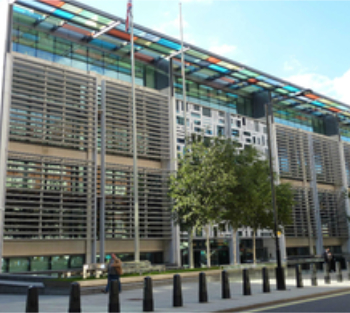Dowel laminated timber DLT
Dowel Laminated Timber (DLT) is also know as brettstapel, literally meaning board stack in German. it is a technique of constructing large-scale solid timber panels for use as structural or non-structural elements, utilising smaller untreated sawn timber sections, which are mechanically fixed together with timber dowels.
In a similar way to traditional green oak frame the dowels are seasoned or dried, whilst the main body of timbers are not, so the have a higher moisture content, the dowels soak the moisture from their wetter surroundings and expand ensuring the dowels connection is strong and tight. In oak framing structure the dowels tend to also be made from oak, in DLT they may be made from beech or any other suitably dried hardwood, in both cases the structure and dowels dry over time creating stable established connections.
DLT is said to have been originally conceived by the German engineer Julius Natterer in around the 1970s (hence the reason it is still often referred to as brettstaple). At this time the technique consisted of low grade posts of sawn timber laid side by side, continuously nailed together to create solid structural elements, which then evolved to include glues for increased strength and wider spans. Apart from issues around end of life scenarios, the randomly placed nails also caused problems for modifying or cutting any elements.
In 1999 a German company developed a dowelled wood system (Dübelholz) replacing the nails, this overcame the issues of modification and end-of life because the system became a single material solution. However contraction and expansion from variations in temperature or moisture over time, could potentially cause separation along the dowel axi, compromising strength leading to reintroduction of glue or nails.
2001 An Austrian company developed a system of inserting timber dowels at angles through the posts in ‘V’ and ‘W’ formations to solve the issue, it virtually eliminated the potential for movement gaps retaining a 100% timber product. Other manufacturers have different means of dealing with the issue, including driving dowels through rotating layers of boards, though this is perhaps the most innovative.
Today many different companies manufacture Brettstapel in Austria, Germany, Switzerland and Norway. The most common form of Brettstapel is the perpendicular dowel with the majority of systems not utilising any glue. DLT utilizes locally sourced material and does not include adhesives it can be considered a natural low carbon value engineered product.
[edit] Related articles on Designing Buildings
- Carpentry.
- Compressive strength of timber lattice columns for low-rise construction.
- Cross laminated timber.
- Nail Laminated timber.
- Engineered bamboo.
- Engineered wood products.
- Facts about forestry.
- Glulam.
- Janka hardness rating scale.
- Laminated veneer lumber LVL.
- Modified wood.
- Nails - a brief history.
- Plywood.
- Predicting service life of timber structures.
- Sustainable timber.
- Testing timber.
- The differences between hardwood and softwood.
- The use of timber in construction.
- Timber frame.
- Timber vs wood.
- Types of timber.
- Types of timber species.
- Whole life carbon assessment of timber.
- Wood around the world.
[edit] External Links
Featured articles and news
Shortage of high-quality data threatening the AI boom
And other fundamental issues highlighted by the Open Data Institute.
Data centres top the list of growth opportunities
In robust, yet heterogenous world BACS market.
Increased funding for BSR announced
Within plans for next generation of new towns.
New Towns Taskforce interim policy statement
With initial reactions to the 6 month policy update.
Heritage, industry and slavery
Interpretation must tell the story accurately.
PM announces Building safety and fire move to MHCLG
Following recommendations of the Grenfell Inquiry report.
Conserving the ruins of a great Elizabethan country house.
BSRIA European air conditioning market update 2024
Highs, lows and discrepancy rates in the annual demand.
50 years celebrating the ECA Apprenticeship Awards
As SMEs say the 10 years of the Apprenticeship Levy has failed them.
Nominations sought for CIOB awards
Celebrating construction excellence in Ireland and Northern Ireland.
EPC consultation in context: NCM, SAP, SBEM and HEM
One week to respond to the consultation on reforms to the Energy Performance of Buildings framework.
CIAT Celebrates 60 years of Architectural Technology
Find out more #CIAT60 social media takeover.
The BPF urges Chancellor for additional BSR resources
To remove barriers and bottlenecks which delay projects.
Flexibility over requirements to boost apprentice numbers
English, maths and minimumun duration requirements reduced for a 10,000 gain.
A long term view on European heating markets
BSRIA HVAC 2032 Study.
Humidity resilience strategies for home design
Frequency of extreme humidity events is increasing.
National Apprenticeship Week 2025
Skills for life : 10-16 February

























Comments
[edit] To make a comment about this article, or to suggest changes, click 'Add a comment' above. Separate your comments from any existing comments by inserting a horizontal line.